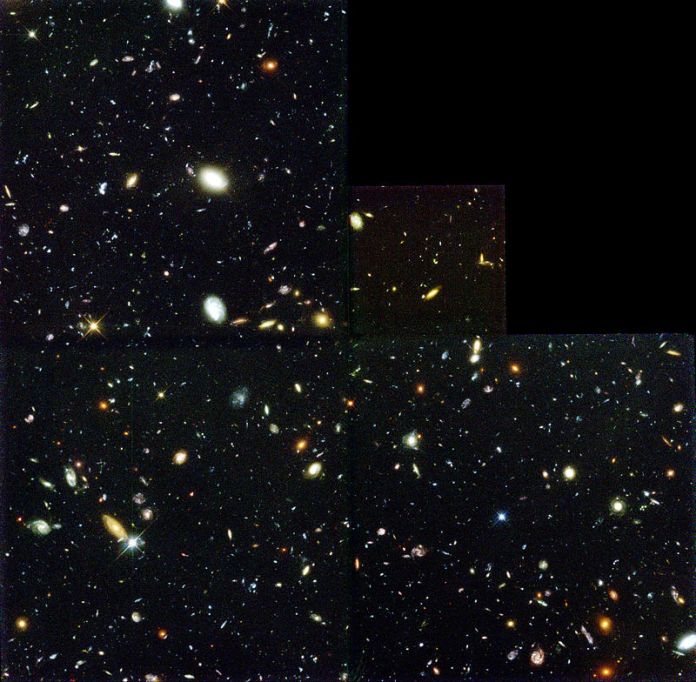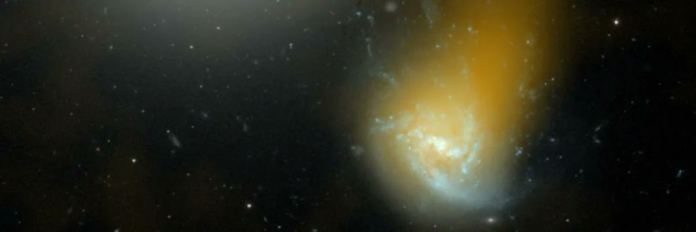
Comprehensive Sky Survey Finds Over a Million New Objects (Image Credit: SNN)
In perfect viewing conditions, with good eyesight and clear, dark skies, the average person can see between 2,500 and 5,000 stars in the night sky. Add a telescope to the mix, and the number of visible objects in the sky explodes exponentially. For example, in 1995, the Hubble Space Telescope famously pointed its mirrors at a tiny piece of empty space – about 1/12th the size of the Moon – and revealed three thousand new objects crammed into that little area, most of them distant galaxies, offering a glimpse of the past stretching back to the early Universe. The astounding implication of the Hubble Deep Field image was that there are still billions of objects out there yet unseen by human eyes (or telescopes). Since then, the process of surveying deep space has been a massive ongoing undertaking, using all the tools available to us, from visible light telescopes like Hubble to infrared and radio telescopes. In a new data dump last week, a major radio sky survey, LOFAR, has revealed over a million new, never before seen objects in the night sky.
The LOFAR Two-Meter Sky Survey (LOFAR stands for ‘International Low-Frequency Array’), is a network of interconnected radio telescopes across Europe. LOFAR began as a national project in the Netherlands in 2010, but has since expanded to include multiple countries. There are currently 48 sensor stations connected to the network, with more expected to come online in the near future. LOFAR’s unique capabilities allow it to survey an impressively wide portion of the night sky, capturing low-frequency radio signals from distant objects. At these frequencies, the objects that LOFAR finds tend to be highly energetic distant objects like black holes, galaxies bursting with star formation, and explosive galactic mergers, though it does occasionally catch bright objects closer to home, like nearby flaring stars.

Perhaps the most impressive part of the LOFAR survey is its width. This release covers a whopping 27 percent of the northern sky, offering researchers a wealth of information on high-energy objects across a vast swath of space.
According to Durham University, “the research team found about a million objects that have never been seen before with any telescope and almost four million objects that are new discoveries at radio wavelengths.
In total, the catalog shows 4,396,228 radio sources coming from the region. It’s an impressive resource for astronomers to dig into, and it’s just the beginning. As Timothy Shimwell (ASTRON and Leiden University) explains, “this release is only 27% of the entire survey and we anticipate it will lead to many more scientific breakthroughs in the future, including examining how the largest structures in the Universe grow, how black holes form and evolve, the physics governing the formation of stars in distant galaxies and even detailing the most spectacular phases in the life of stars in our own Galaxy.”

The survey will continue to expand its catalog across the northern skies in the coming months. According to the team, “our aim is now to secure the observing time required to complete [the survey] whilst ensuring we are able to process the data in a way that maximises the scientific opportunities. To this end we have secured observations that will extend our coverage…to 85% of the northern hemisphere by May 2023.
In the meantime, the data for this 27% is publicly available for researchers to peruse, and is bound to offer some exciting new discoveries. A previous LOFAR release revealed many previously unknown phenomena, including signals that might represent orbiting exoplanets; a slow-spinning pulsar “that challenges the current theories describing such objects,” “jellyfish galaxies” that shed material while traveling through space, and black holes eruptions.
– Advertisement –






